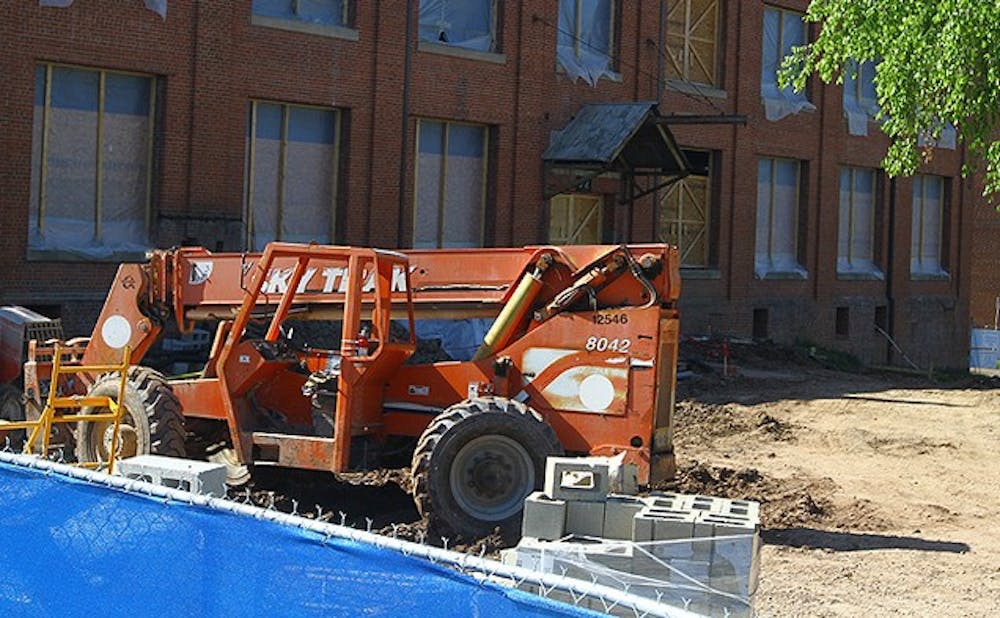Editor's note: This is one of three articles on campus construction projects.
Although known for the medieval-era Gothic architecture on the Main Quadrangle, the University is continuously expanding and adapting to the modern age both in looks and functionality.
Duke’s campus has undergone massive changes in this summer alone. When students return to campus in the Fall, the Events Pavilion will be open and West Union will be closed. The Bryan Center will have a whole new look, as will the Gilbert-Addoms Down Under. All in all, the 57 construction projects are currently underway to revamp the Gothic Wonderland for students and faculty alike.
The Duke University Health System has also completed several major construction projects in the past couple of years. The Mary Duke Biddle Trent Semans Center for Education provides a physical home for the School of Medicine, and the Medical Pavilion allows the hospital to expand patient care.
Check out The Chronicle’s breakdown of campus construction and how it will change the face of Duke’s campus and downtown Durham for years to come.
Duke’s expansion and reinvention is not limited to the campus. In recent years, the University has also taken steps to acquire space in downtown Durham.
In 2005, Duke had 70,000 square feet of space downtown. Now the University has 950,000, said Scott Selig, associate vice president of capital assets and real estate. Selig said that it is difficult to estimate the direct effect Duke has had on downtown’s revitalization, but noted that around 60 businesses opened in Durham last year.
“We want downtown to be better, and we want to make the connection between Duke and Durham stronger,” Selig said.
Duke’s off-campus acquisitions are mostly occupied by offices—some are used by the University and by DUHS. Space has also been leased to tenants.
“It’s just been a lot of fun,” Selig said of acquiring the downtown space. “Durham is a more exciting place partially because Duke has moved interesting groups downtown.”
DUHS has also moved downtown in an effort to help the Durham revitalization effort that the University began five years ago, Dzau said. He noted that such a revitalization effort is important to attract students and faculty to the area.
Dzau likened the process to Yale and the Massachusetts Institute of Technology’s effort to revitalize their surrounding areas. By putting faculty in downtown Durham, businesses become increasingly attracted to the bustling area.
1,000 employees from the Duke Clinical Research Institute were moved into downtown Durham in spaces leased by DUHS this year.
Developers are currently working on renovating the Carmichael Warehouse in downtown Durham into a research lab, Brown said.
“We hope to be the anchor for others to [become] attracted to the area to create a synergistic campus that’s both Duke and Durham,” Brown said.
Get The Chronicle straight to your inbox
Signup for our weekly newsletter. Cancel at any time.

